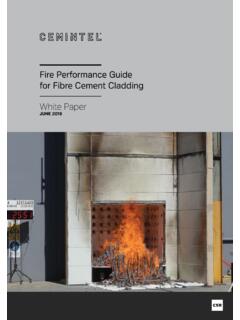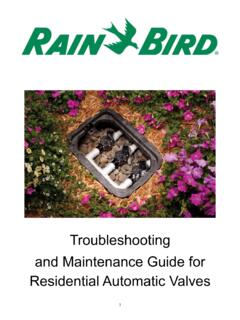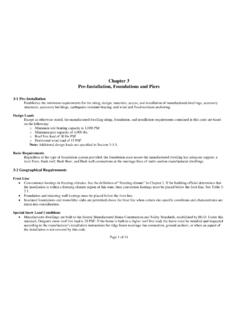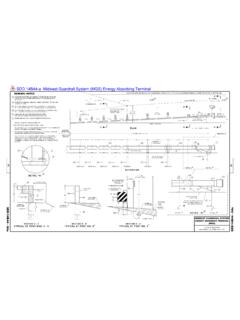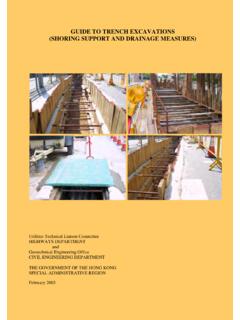Transcription of DESIGN AND INSTALLATION GUIDE - Cemintel
1 EXTERNAL CLADDING & EAVES LININGR esidential External Cladding SystemDESIGN AND INSTALLATION GUIDEEXTERNAL CLADDING & EAVES LINING2 CONTENTSDESCRIPTION 2 APPLICATIONS 2 ADVANTAGES 2 MATERIAL PROPERTIES 2 COMPONENTS 3 4 DESIGN CONSIDERATIONS 4 5 HANDLING AND STORAGE 6 SHEET PREPARATION 6 DECORATION 6 INSTALLATION WALL CLADDING 7 9 INSTALLATION CEILINGS & EAVES 10 11 CONTACT DETAILS 12 DESCRIPTIONC emintel Cladding Sheet and Cemintel Eaves Lining Sheet are autoclaved, cellulose fibre reinforced cement sheets with a smooth flat surface.
2 Joint treatments include PVC moulds and timber cover strips, and the sheets are required to be paint and Eaves Lining Sheets conform to the requirements of Cellulose-cement products Part 2: Flat sheets. They are immune to water damage and will not Cladding Sheets are designed for use as external wall cladding for residential buildings, in locations such as verandas, gables, garages and upper storey additions. They can also be used for exterior ceilings and eaves. Cemintel Eaves Lining Sheets are conveniently sized for use in the lining of and Eaves Lining Sheets are suitable for buildings in wind classifications up to N3 and for use with timber framing.
3 They may be used to meet the requirements of some Bushfire Attack Levels. Refer to Cemintel manual Construction GUIDE for Bushfire Smooth surface finish on face of sheet easily accepts exterior paint finishes. Simple and quick to install using standard building methods. Immune to permanent water damage. Will not rot. Low maintenance. High durability exterior grade material. Fire resistant. Termite PROPERTIESMANUFACTURING TOLERANCESC ladding Sheet 6mm thickness (nominal) Lining Sheet thickness (nominal) Width+0, -3mmSheet Length+0, -4mmSheet Thickness+ , -0mmDiagonal Difference3mmFIRE RESISTANCEIn accordance with the Building Code of Australia, Part , Cemintel fibre cement sheets can be used wherever non-combustible material is required by the Fire Hazard Indices for Cladding Sheet and Eaves Lining Sheet are.
4 Ignitability0 Spread of Flame0 Heat Evolved0 Smoke Developed0 Group Number1 Average Specific Extinction Area<250m2/kgEXTERNAL CLADDING & EAVES LINING3 COMPONENTSCEMINTEL CLADDING SHEETC emintel Cladding Sheet is available in and 6mm thickness and a range of sizes. Sheets are supplied with square Length (mm)Width 900 mmWidth 1200 2400 2700 3000 Cemintel EAVES LINING SHEETC emintel Eaves Lining Sheet is available in thickness and a range of sizes to suit common eaves widths. Sheets are supplied with square Length (mm)Width 450mmWidth 600mmWidth 750mm2400 FASTENERSC emintel Fibre Cement Nails:Galvanised x 30mm for softwood and hardwood timber NoNailPack x : Stainless steel nails (supplied by others) are required for high corrosion Fibre Cement Screws For Ceilings and Eaves with Timber FramingFor 6mm thickness sheet: 30mm FibreTEKS Class 4 self embedding head and 6mm thickness sheets: N 8 x 30mm Class 3 wafer head screwsOrder NoScrewPack Size12561410G-18 x 30mm FibreTEKS100011407010G x 30mm Wafer head1000 Note.
5 Class 4 screws (supplied by others) are required for high corrosion zonesPVC JOINING STRIPSPVC extrusions can be used for for sheet joining and edge finishing. Joining Strips have an extended leg to enable concealed fixing of the profile to the supporting H MouldOrder Cap MouldOrder Internal CornerOrder External CornerOrder NoSizeLength1119 Cover StripOrder NoSizeLength1119 06 x Corner Angle MouldOrder NoSizeLength111764 x 47 x FLASHINGPVC Angle weatherproofing used over sarking at internal and external N 50 x 50 x 2400mm PVC Angle11205 EDGE SEALERFor sealing panel edges after onsite N Cemintel Edge Sealer 200mL10 016630mmEXTERNAL CLADDING & EAVES LINING4 SARKINGB radford foil products are used to provide thermal insulation and moisture protection.
6 Thermofoil 733 is a double reflective foil for high thermal ProductVapour Barrier ClassificationQuantityOrder N EnviroSeal Wall Wrap Medium1350mm x 60m roll10576 EnviroSeal Wall BreatherLow1350mm x 60m roll18666 INSULATIONB radford products are used to provide insulation to meet required thermal CONSIDERATIONSSYSTEM DESIGNE xterior walls and ceilings are subject to wind loads and the DESIGN of framing and fixings must be based on the project s site conditions. Fixing requirements are provided for Wind Classifications N1 to N3 for buildings that come within the scope of AS 4055: Wind Loads for Housing. Factors that affect the classification include the wind speed region, the terrain category in the vicinity of the site, and shielding from nearby buildings.
7 Local pressure factors also apply to parts of the is the responsibility of the building designer to determine the applicable Wind Classification for the and Eaves Lining Sheet should be fixed to timber framing that has been designed in accordance with AS1684 Residential Timber-Framed Construction, and maximum stud spacings as specified in the INSTALLATION shall be seasoned or have reached an equilibrium moisture content of 16% or less at the time of framing. Unseasoned timber is not recommended as it is prone to shrinkage and PROTECTIONAs there is a wide variety of methods for managing termite entry to buildings, and selecting the appropriate method for any structure depends on specific risk factors and the form of construction, measures for termite management have not been addressed in this GUIDE .
8 Refer to your local pest management service, the BCA, AS3660, or your local building authorities for more information about the requirements for the DESIGN of a suitable termite management system. SARKINGIt is a requirement that sarking is used for walls clad with Cemintel Cladding Sheet. Wind forces can produce lower air pressures within buildings than on the outside, assisting to force water through gaps in the building envelope such as around penetrations and joint locations, even at low wind must be designed and installed in accordance with AS/NZS4200 Part 1: Materials, and Part 2: INSTALLATION Requirements. Recommended products are Bradford Enviroseal Wall Breather (Low vapour transmission resistance) and Enviroseal Wall Wrap (Medium vapour transmission resistance).
9 Condensation is a complex problem, and can occur under a variety of conditions, not just cold weather. Literature on this subject is available from CSIRO/BRANZ/ASHRAE and should be consulted when building in areas where condensation is likely to occur. In these cases, the appropriate use of a sarking as a vapour barrier or as thermal insulation, or both, can be effective in controlling CLIMATESIn cold climates where condensation in the wall cavity is possible, a vapour barrier is also recommended between the internal linings and the Cladding Sheets are not designed to be in contact with snow or ice for extended periods, such as is experienced in alpine areas subject to snow CLADDING & EAVES LINING5 COASTAL AREASF ixings used with Cladding and Eaves Lining Sheets may not be suitable for use in coastal areas, defined as up to 1km from a surf beach.
10 Or less than 50m from a shore without breaking surf. Consideration must also be given to local weather and topographical features that can cause an increase in the distance that salt spray can travel beyond these limits, extending the coastal area. Check with fixing manufacturers for alternative fixings that are suitable for use in coastal and other corrosive these areas, walls must be sufficiently exposed from above so that rain can perform natural wash down of the wall. Walls that are protected by soffits above must be washed down twice per year, to remove salt to the application of external coatings, wash down walls with clean fresh water to remove salt spray build-up from sheets and fixings.
